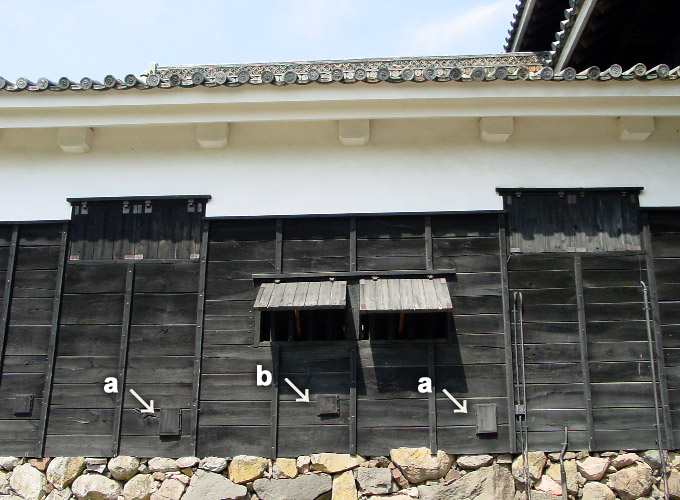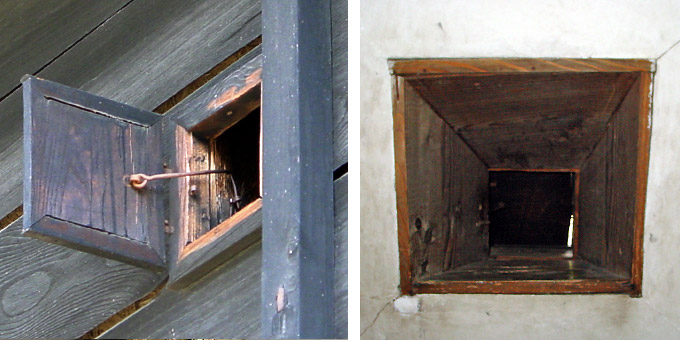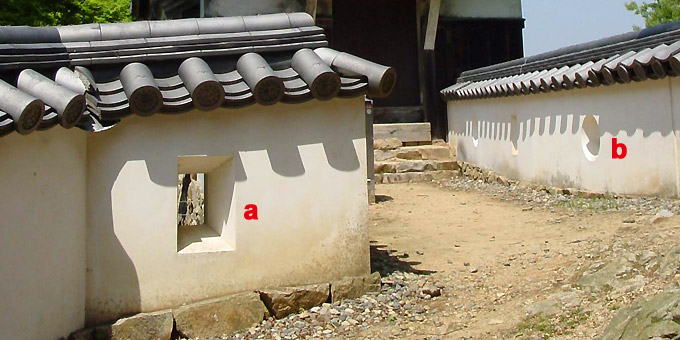| Also
read hasama. A loophole or porthole made in the wall of the keep,
tower, or parapet to allow a castle to defend itself with arrows *yazama
ξ·Τ, spears and hand-held firearms *teppou
sama SC·Τ and large cannon oozutsu zama ε·Τ. The openings
were circular, triangular, rectangular, square, pentagonal or hexagonal,
with the dimensions of the outside opening often smaller than the interior
opening in order to protect the defenders. Many loopholes were hourglass
shaped *uchisoto
hachimonji ΰOͺΆ, narrow in the centre with wide openings at either
side. This gave the widest possible shooting range and flexibility from
the inside, and the minimum exposure to the enemy. Arrow loopholes yazama,
constructed as a narrow vertical rectangle, were classified into seated
or standing loopholes, *isama
·Τ and *tachisama
§·Τ respectively. They were also classified by location: loopholes beneath
one's feet ashishita sama «Ί·Τ or side loopholes *yokosama
‘·Τ. Loopholes made in earthen walls or earthen embankments were called
tsuchisama y·Τ and those in a stone wall *ishisama Ξ·Τ. Sometimes
they were constructed with special hidden openings, kakushisama B·Τ,
that couldn't be spotted from the outside. Edo military scholars had specific
rules, called *samakubari
·Τz, not only for placement but also for the distribution of loopholes in
the castle walls. |






